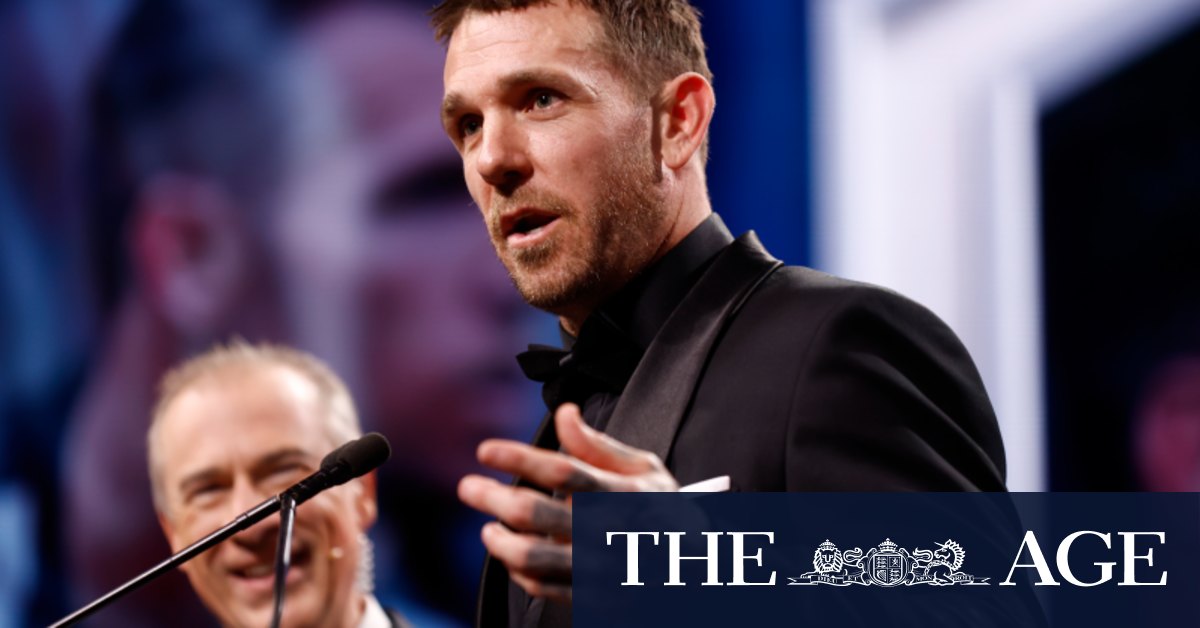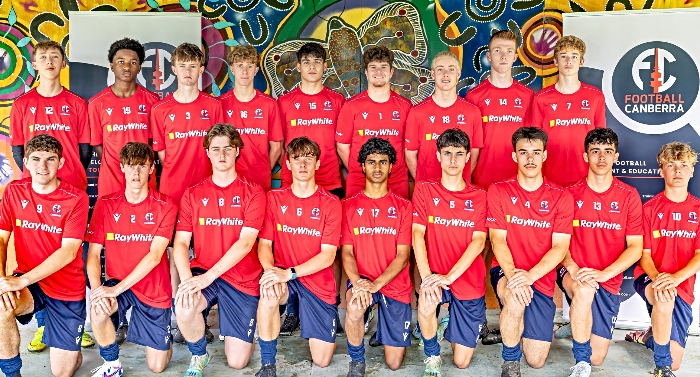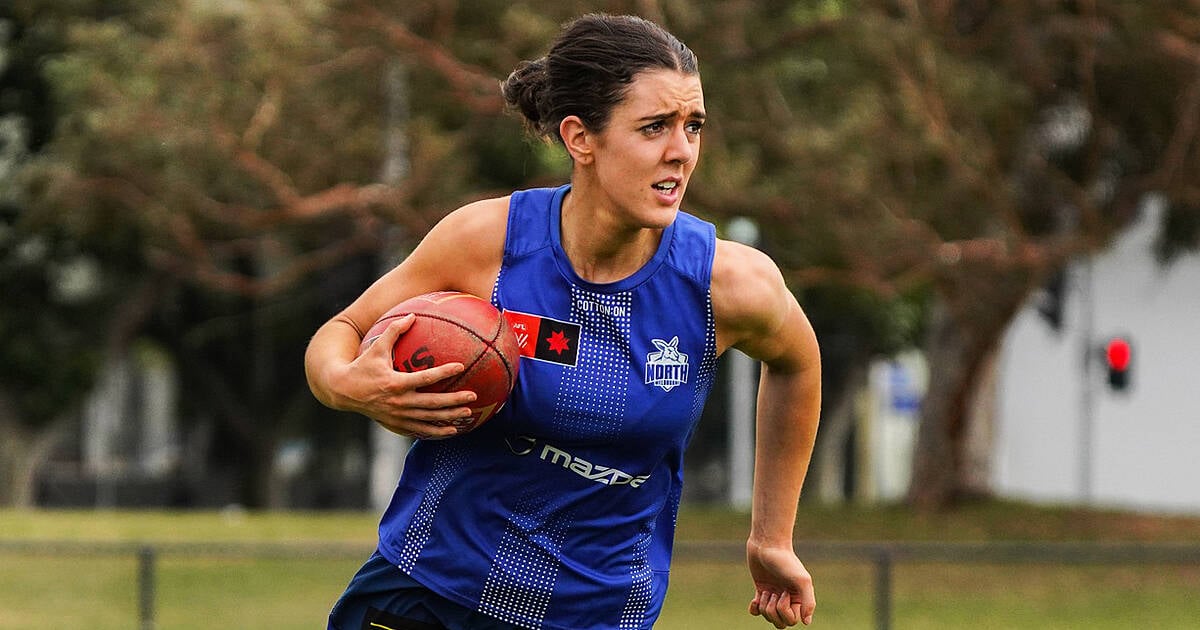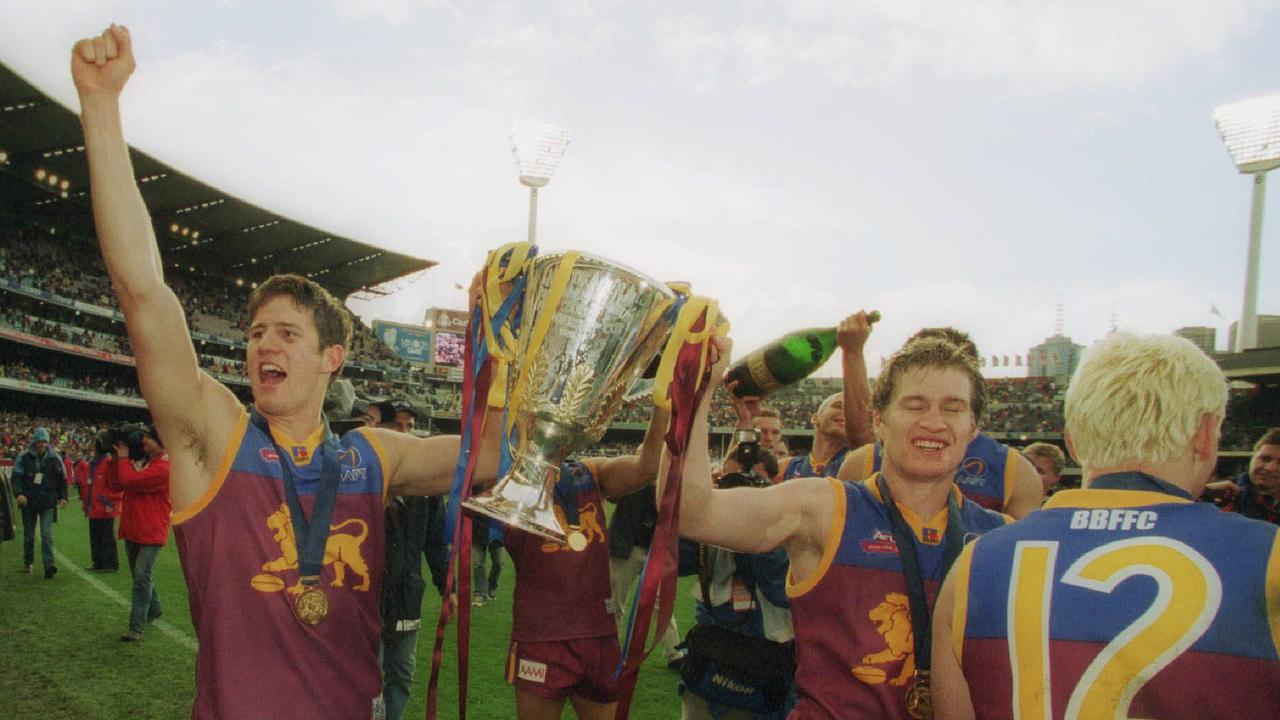Every picture tells a story: Dane Swan enters the Australian Football Hall of Fame

- by Admin
- June 18, 2024

Swan would say he knew what he could and couldn’t do to succeed, and did them. He’s 40 now, but revels still in public as a kind of celebrity provocateur. He’s as picturesque as ever.
If Swan’s footy journey made a halting beginning, Kelvin Templeton’s subsided to a premature end. Injuries saw to that. That’s probably why it’s taken nearly 40 years since his last game to enter the hall of fame.
Templeton began prodigiously. His parents had to drive up from the Latrobe Valley to take him to his first game, against Collingwood at Victoria Park. He was 17. He kicked six goals.
At 20, he played for Victoria. At 21, he kicked 15.9 in a game against St Kilda, including eight in the last quarter. He kicked 100 that season, and 91 the next year despite suffering a collapsed lung while in Scotland between seasons.
A strong mark, agile and distinctive with his often long sleeves, Templeton simply was a gun. When coach Royce Hart moved him to centre half-forward in 1980, he rejoiced in the freedom and won the Brownlow.
Kelvin Templeton on Brownlow night in 1980.Credit: Archives
He was just 24, but already injuries were hobbling him. In the last six years of his career – two for the Dogs, three for Melbourne after a big-money, high-profile move – he played just 54 games.
Unquestionably, fame is harder won in the lower reaches. Templeton’s career has been somewhat obscured because he played for two unfashionable clubs in lean times. In his century year, the Dogs finished second last. In his Brownlow year, they were last. He only played in one final.
This is the cruelty of team sport. The late, great Robbie Flower, a contemporary, played in none until his last season.
Templeton later spent seven years as CEO of Sydney Swans.
Two South Australians who also might be called dual citizens were inducted on Tuesday night. Chris McDermott played 12 seasons for Glenelg, overlapping six for the Crows – the first four as the club’s first captain. The victory over Hawthorn in Adelaide’s inaugural game is one he will never forget.
Affectionately known as “Bone”, he looked like a footballer and played like one, well enough to win three All-Australian guernseys. There was uproar in Adelaide when incoming coach Malcolm Blight moved on McDermott in 1996 – until the Crows won their first premiership the next year.
Loading
Michael Graham, aka “The Flash”, played footy the year round, for Sturt in the winter and St Mary’s in Darwin in the wet. It makes his game count rubbery, but he did win a slew of premierships and medals, and is in the Indigenous Team of the Century.
Ray Schofield won West Perth’s best and fairest five times in the immediate post-war years – from full-back. His 10-year duel with South Fremantle’s Bernie Naylor is still talked about. Schofield’s 22 state games included three wins in a row over Victoria.
English-born Ralph Robertson played 14 games for St Kilda around the turn of the 20th century before he moved to Sydney for work and became a founding father of the indigenous game there, appearing 40 times for NSW.
Who knows how many more it might have been if the warplane he was piloting hadn’t collided with another on his side in Egypt in 1917, killing him at 34.
Robertson played in only one win for St Kilda, but it was the Saints’ first win in the VFL and their only win in the first four years of the competition. Whether that qualifies him for the hall of fame, it’s indisputably memorable.
As previously announced, prodigious Hawthorn goal-kicker Jason Dunstall was formally elevated to Legend on Tuesday night.
Keep up to date with the best AFL coverage in the country. Sign up for the Real Footy newsletter.
The Latest News
-
December 25, 2024Where to watch Australia vs. India 4th Test: Free live stream, free-to-air channel, start time for cricket match | Sporting News Australia
-
December 25, 2024Gearing Up for Australian Open, Nick Kyrgios Elevated in Bold Predictions From Renowned Tennis Experts
-
December 25, 2024Dads’ day out! Australian stars unwind with with wives, kids at MCG. Watch | Cricket News – Times of India
-
December 25, 2024Border-Gavaskar Trophy: What is Australia’s record in Melbourne in Test matches? | Sporting News Australia
-
December 25, 2024India must continue to exploit ‘brittle’ Australian line-up: Ravi Shastri | Cricket News – Times of India





